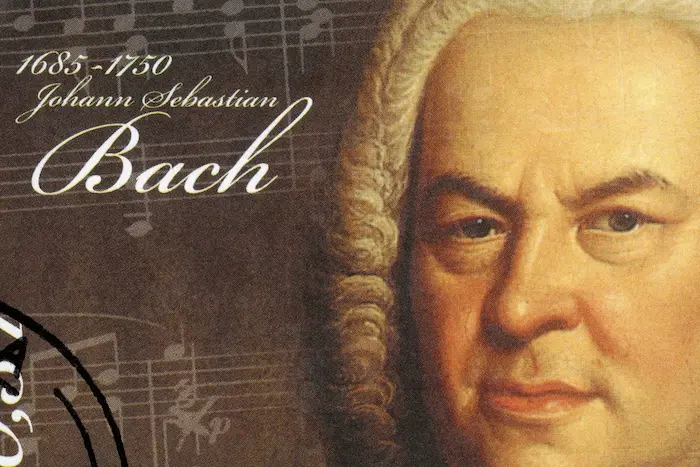Johann Sebastian Bach, a towering figure of the Baroque era, composed a vast body of work that has influenced countless musicians and composers. Among his many pieces, the “Minuet in G” holds a special place in the repertoire. This charming and accessible piece is often one of the first classical compositions that piano students encounter. Despite its simplicity, the “Minuet in G” encapsulates the elegance and grace of Bach’s style. In this article, we will delve into the historical background, musical structure, performance practices, and cultural impact of the “Minuet in G,” offering a detailed examination of this beloved work.
I. Historical Background
Bach’s Life and Era
Johann Sebastian Bach was born on March 31, 1685, in Eisenach, Germany. His musical family background provided a strong foundation for his future career. Bach’s life spanned the late Baroque period, a time characterized by ornate musical forms and expressive depth. He served in various musical positions throughout his life, including as a court musician, church organist, and composer. His work is celebrated for its technical mastery and emotional range.
The “Minuet in G” and Its Origins
The “Minuet in G” is part of the “Notebook for Anna Magdalena Bach,” a collection of pieces compiled for Bach’s second wife, Anna Magdalena. The notebook contains works by Bach and his contemporaries, intended for domestic music-making. Although often attributed to Bach, recent research suggests that the “Minuet in G” was composed by Christian Petzold, a German composer and contemporary of Bach. Despite this, the minuet remains closely associated with Bach’s musical legacy due to its inclusion in the notebook and its enduring popularity.
II. Musical Structure and Analysis
Form and Structure
The “Minuet in G” follows a classic minuet form, which was a popular dance style in the 18th century. The piece is structured in a simple AABB form, consisting of two main sections, each of which is repeated. This structure is typical of minuets, providing a clear and balanced musical framework.
A Section: The first section presents the main theme, characterized by its elegant and flowing melody. The harmony is straightforward, supporting the melody with a clear chord progression.
B Section: The second section introduces a contrasting theme, often with a slightly different character or mood. This section is also repeated, maintaining the structural symmetry of the minuet form.
Melody and Harmony
The melody of the “Minuet in G” is lyrical and graceful, with a singable quality that reflects the dance-like nature of the piece. It is written in G major, a key associated with brightness and joy. The harmony is simple and diatonic, with clear chord progressions that enhance the melody. This straightforward approach allows the elegance of the melody to shine through.
Rhythm and Tempo
The “Minuet in G” is written in 3/4 time, which is typical for minuets. The rhythm is steady and gentle, creating a sense of calm and order. The tempo is moderate, allowing the music to flow smoothly and emphasizing the dance-like quality of the piece. The steady rhythm and moderate tempo contribute to the overall charm and grace of the minuet.
III. Performance Practice
Interpretation and Expression
Performing the “Minuet in G” requires a balance of technical skill and expressive nuance. Musicians often focus on phrasing, articulation, and dynamics to bring out the character of the piece. The tempo should be moderate, allowing the elegant melody to unfold naturally.
Technical Considerations
For pianists, the “Minuet in G” offers an excellent exercise in hand coordination and finger independence. The left hand typically plays a simple accompaniment, while the right hand carries the melody. This piece is often used as a teaching tool to develop these foundational skills.
IV. Cultural Impact and Legacy
Educational Significance
The “Minuet in G” has long been a staple of piano pedagogy. Its accessibility and charm make it an ideal piece for introducing young musicians to the world of classical music. Many students have their first encounter with Bach through this piece, sparking a lifelong appreciation for his work.
Appearances in Popular Culture
The “Minuet in G” has transcended the world of classical music, appearing in various forms of popular media. It has been featured in films, television shows, and even video games, often serving as a symbol of elegance and refinement.
Influence on Later Composers
Bach’s influence on later composers is profound, and the “Minuet in G” is no exception. Its simple yet effective use of melody and harmony has inspired countless musicians and composers throughout the centuries. The piece exemplifies the timeless appeal of Baroque music.
V. The Minuet in G in Modern Times
Recordings and Performances
There are numerous recordings of the “Minuet in G” by renowned pianists and ensembles. Each interpretation brings out different nuances of the piece, highlighting its versatility and enduring appeal. Live performances continue to captivate audiences, demonstrating the minuet’s lasting popularity.
Adaptations and Arrangements
The “Minuet in G” has been adapted for various instruments and ensembles. These arrangements showcase the piece’s adaptability and allow it to be enjoyed in different musical contexts. Whether performed by a solo pianist or a string quartet, the minuet retains its charm and elegance.
See Also: What Makes Classical Music Complicated?
VI. Conclusion
Bach’s “Minuet in G” is a remarkable example of the elegance and grace of Baroque music. Its simple yet captivating melody, straightforward harmony, and charming rhythm make it a beloved piece in the classical repertoire. The minuet’s significance extends beyond its historical context, influencing generations of musicians and captivating audiences around the world. Whether as an educational tool, a popular cultural reference, or a cherished concert piece, the “Minuet in G” remains a testament to Bach’s enduring legacy and the timeless appeal of his music.

